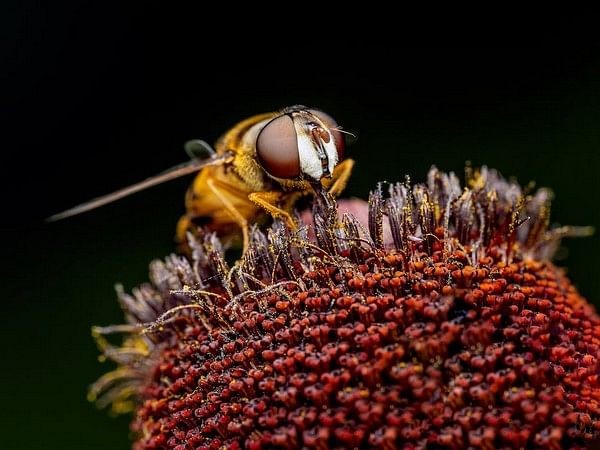Description

Disclaimer: Copyright infringement not intended.
Context
- The first live specimen of a yellow-legged hornet, which “poses a threat to honeybees and other pollinators,” has been detected in the wild in the United States.
Details
- The Yellow-legged Hornet, scientifically known as Vespa velutina, is a species of hornet native to Southeast Asia.
- Recognized for its distinctive appearance and potential ecological impact, this hornet has garnered attention for its invasive spread to other parts of the world.
Appearance and Characteristics
- The Yellow-legged Hornet has a dark velvety appearance on its body, with a characteristic yellow color on its legs and the first segment of its abdomen.
- It measures around 25 to 30 millimeters in length, making it relatively smaller than some other hornet species.

Coloration and Identification
- Its dark body and bright yellow legs make it easily distinguishable from other hornet and wasp species.
- The unique coloration serves as a key feature for identifying this hornet.
Habitat and Distribution
- Native to Southeast Asia, including countries like China and India, the Yellow-legged Hornet has expanded its range to other parts of the world.
- Human activities, such as global trade and transportation, have contributed to its invasive spread.
- The hornets establish nests in various settings, including forests, rural areas, and even urban environments.
- They often choose locations near food sources, such as apiaries or orchards.
Behavior and Diet
- Yellow-legged Hornets are known for their predatory behavior, primarily preying on insects like honeybees, wasps, and other pollinators.
- Their diet also includes nectar, sap, and even fruit juices.
Ecological Concerns
- The predatory behavior of the Yellow-legged Hornet can disrupt local ecosystems and food chains.
- Reductions in pollinator populations can affect plant reproduction and ecosystem stability.
Impact on Pollinators
- The hornet's predation on honeybees has raised concerns about its impact on local bee populations.
- While not the sole factor, their presence can contribute to decreased bee numbers and pollination rates.
Threats and Management
- The Yellow-legged Hornet's predation on honeybees can lead to significant losses for beekeepers.
- Beehives are vulnerable to attacks, and entire colonies can be decimated by repeated hornet raids.
- Various methods are employed to manage and control the spread of the Yellow-legged Hornet. Traps, nest removal, and public awareness campaigns are used to limit its impact on local ecosystems.

Conclusion
The Yellow-legged Hornet, with its distinctive appearance and predatory habits, has drawn attention due to its potential ecological impact on pollinators and ecosystems. As efforts continue to manage its spread and minimize its negative effects, understanding the hornet's behavior, habitat preferences, and ecological interactions is essential for safeguarding local biodiversity and maintaining healthy ecosystems.
|
PRACTICE QUESTION
Q. Consider the following statements about the Yellow-legged Hornet (Vespa velutina):
1. It is a native species of Europe, commonly found across the continent.
2. Yellow-legged Hornets are smaller in size compared to other hornet species.
3. Their diet mainly consists of nectar and honey, making them important pollinators.
4. They are known to pose a threat to honeybee populations as they can hunt and feed on them.
How many of the statements given above are correct?
A) Only one
B) Only two
C) Only Three
D) All Four
Answer: B)
|
https://theprint.in/world/invasive-yellow-legged-hornets-spotted-in-us-for-first-time/1721957/












